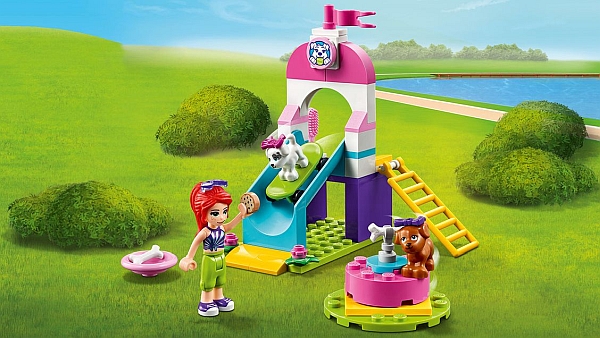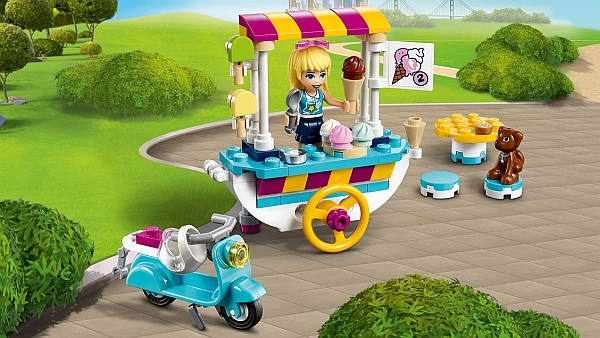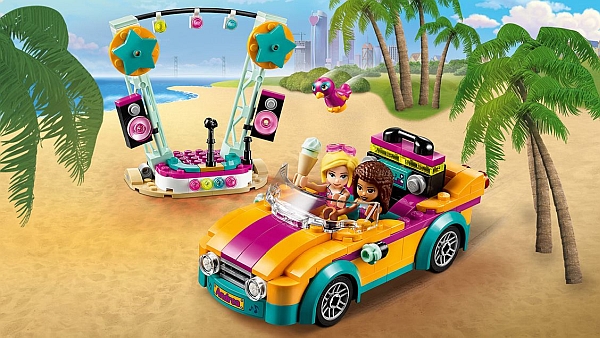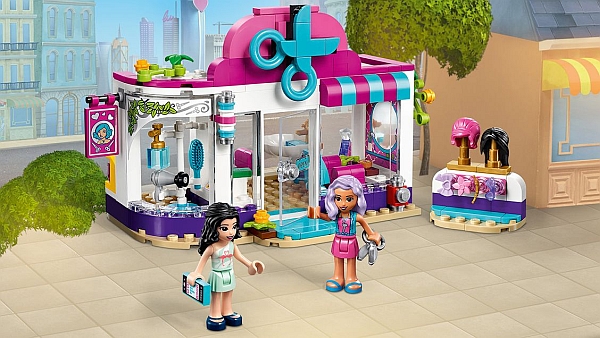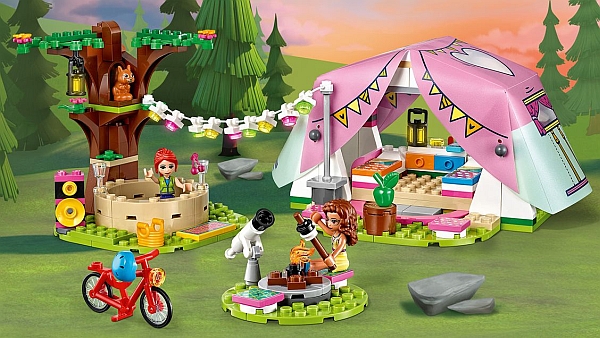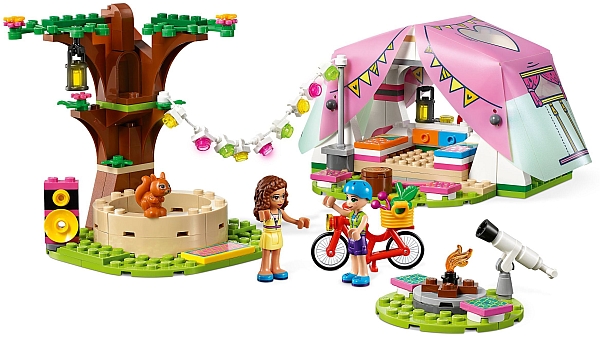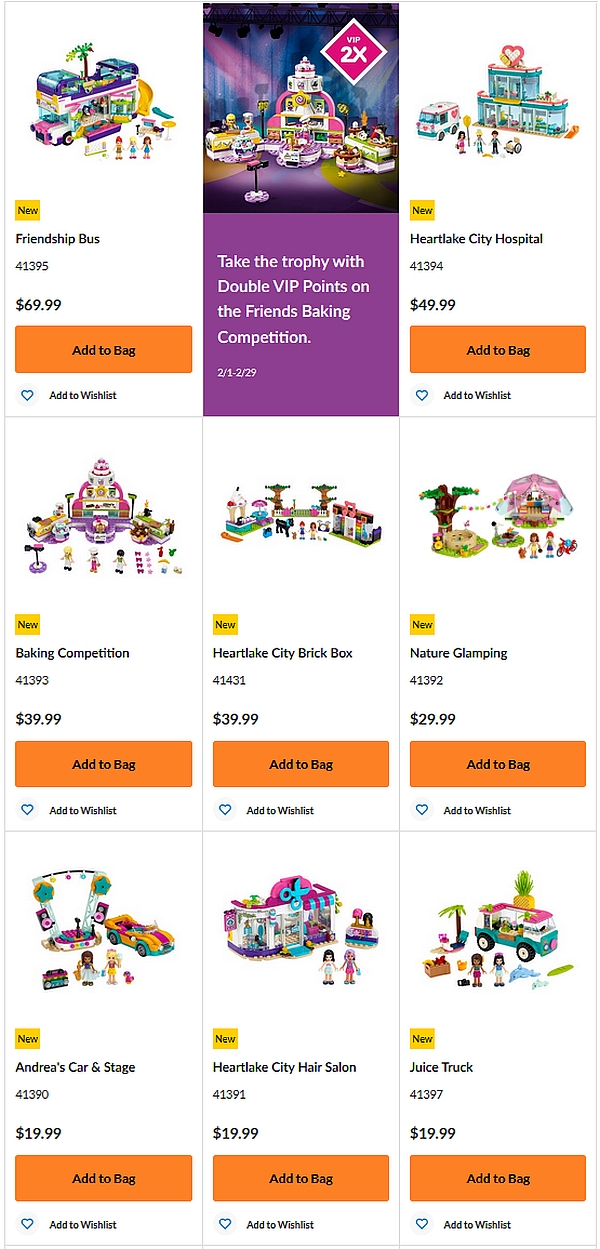As we discussed a few days ago, LEGO recently ran a questions and answers session with the LEGO Group’s Chief Marketing Officer, Julia Goldin, to address the concerns of the LEGO fan community about the LEGO Group’s recent acquisition of BrickLink (see: LEGO is Running an AMA on BrickLink). BrickLink is the largest online LEGO marketplace with buyers and sellers from all over the world, and the site has been independently operated by LEGO fans for LEGO fans from the very beginning. LEGO now owning the majority of their own secondhand market has been viewed with concern and suspicion. The AMA session was open until the end of January, and the questions and answers have been gathered on a summary page. Below, I have listed them all so we can discuss the topic, but you can also access the original here.
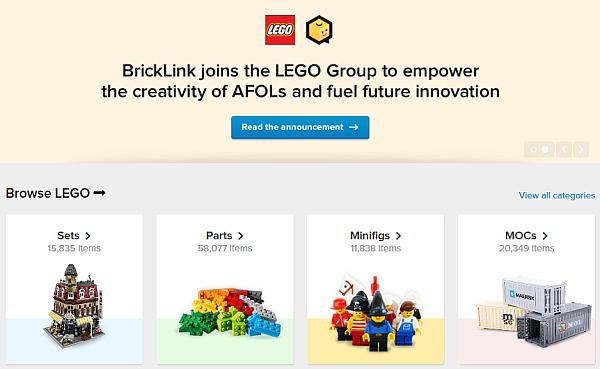
Frequently Asked Questions – BrickLink AMA
1. Will the LEGO Group start providing set inventories and images at product launch to reduce workload of volunteers who currently have to manually inventory the parts in each set? – Yes, we are already in dialog with BrickLink around how to best and most seamlessly share relevant data.
2. Will the LEGO Group be merging Pick-A-Brick/Bricks & Pieces into BrickLink, or integrating either of these two as a ‘seller’ into BrickLink? If yes, how will they ensure that the completely independent pricing/market mechanisms will still be working properly? – We believe that there is room for both Pick-A-Brick and BrickLink, and we do not intend to establish a Pick-A-Brick within the BrickLink marketplace. It’s not about competing in the BrickLink marketplace, but understanding how we can service it better.
3. Will the LEGO Group start advertising BrickLink on their website, in their catalogs and stores, and generally on the internet? – Great question. You are unlikely to see any cross-promotion or advertising on LEGO.com platforms straight away, but it’s something I know the BrickLink and the LEGO Group teams will look at as we create plans for the future.
4. Has the LEGO Group considered creating a group of well-established buyers and sellers to form an advisory committee to define a roadmap for the site? – We would like BrickLink to remain relevant to all! And we see lots of opportunities of how we can support you, whether you are a seller, a buyer, or a designer. It’s still too early to announce any specific plans, but it’s a topic that we find greatly relevant for the future.
5. Will the LEGO Group apply the same brand guidelines to the community (e.g. no religious buildings, weapons, etc.)? – We have had this question a lot and it’s one we’ve debated internally. Our current approach is to continue with what’s working on BrickLink. We will draw the line with builds and behaviors that divide and offend, but honestly we haven’t seen that very often.
6. Blocking all IP creations seems like quite a strong move. How would the LEGO Group consider the grey area in determining when a design transitions into a breach of IPs (e.g. if a logo is not being used)? – This is a tricky one, as we know so many IPs inspire so many creative builds. However, as an IP holder we also know the importance of protecting rights. The BrickLink team will reach out to any sellers who maybe breaching 3rd party IP rights.
7. What initiatives is the LEGO Group taking to address sale of counterfeit items (particularly minifigures) sold on platforms like eBay? Since such items can make their way onto BrickLink, impacting buyer confidence and sellers of genuine products? – We are working hard on this and have a global team dedicated to identifying and removing copycat products. Last year alone the number of enforcements on internet market places exceeded 100,000 globally. It’s an ongoing issue and I want to reassure those of you who sell authentic LEGO elements and sets that we’re on it!
8. Why does the LEGO Group object to the sale of customized (chromed, printed, engraved) parts that there is such high demand for from buyers? – We know this change in the BrickLink Terms of Service has raised some questions. We made it because we have no way of knowing details about the safety and quality of custom parts, especially chromed ones. We don’t want to curb creativity, but we also don’t want to compromise on quality and safety – something we are obsessive about. We hope you appreciate the difficult line we’re trying to walk.
9. Is the LEGO Group planning to enforce an element availability that strictly matches the Online LEGO Shop? If so, does this not really limit AFOL creativity? – To clarify, we are not placing such a restriction on brick availability on the site. Sellers can continue to sell LEGO elements (e.g. old/retired) that are not currently in production.
10. Can store exclusive items that were never released to the general public be sold on the platform? – We often create exclusive building sets for special occasions. Of course, we don’t do this with profit in mind. If sets or elements have been acquired legally, they can be resold on BrickLink.
11. Do you believe it to be reasonable to ban all non-LEGO parts on BrickLink? – We know this is a decision that’s sparked a lot of debate. But we wanted to give clear direction from the outset. We can’t be seen to be endorsing or selling non-LEGO branded products on one of our platforms. We know customized elements are important, but they are a tiny proportion of activity and sales on BrickLink. The platform offers so much more and so much potential. We want to explore how we can develop and grow that with the BrickLink team.
12. Is the LEGO Group considering taking any action against profit-seeking resellers who deal in regional or event exclusive LEGO sets (e.g. Comic Con)? – This was one of the first questions I was asked after announcing the acquisition! We aren’t going to interfere with resale of legitimate LEGO elements. We are also going to continue to produce exclusives for events and special occasions as it’s fun and helps create a bit of buzz. Of course, it’s always disappointing when people exploit these good intentions for personal gain.
13. Will the LEGO Group invest in the backend servers of BrickLink to provide a more robust server so that downtime and slow access/refresh issues are addressed? – We are looking to make investments into the technology platform and the BrickLink site to improve performance, with upgrades planned for both the marketplace (including buyer and seller facing features) and the Stud.io desktop app. More details will be shared on this as we develop the plan.
14. Are there are any plans to develop language-specific BrickLink marketplaces? – Thanks for bringing this subject to our attention. We definitely see an opportunity for more global expansion because BrickLink is currently mostly concentrated around Europe and particularly the U.S. We would need to investigate what is the best way that we can support development that would allow BrickLink to service a broader audience. Clearly, language-specific versions would need to be part of such investigations.
15. How will Stud.io continue under the LEGO Group? And what are the plans for Stud.io vs. LEGO Digital Designer going forward? – The future looks great for digital building and we want to do more! Our vision is to make Stud.io the ultimate building tool for both professional designers and all entry-level builders. We are planning new features and upgrades to the Stud.io desktop app to bring in an influx of new or existing MOCs that can be more easily fulfilled by the BrickLink market. In this regard, the LEGO Group is planning to support and evolve Stud.io and will review opportunities for both services (Stud.io and LDD) as part of developing the business plan. Please stay tuned in the months to come!
16. Will the LEGO Group be regulating the prices of old/retired LEGO sets in any way (this also includes fees associated with the BrickLink platform)? – We do not have an interest in influencing prices on discontinued sets and there are no plans to change transaction fees. We will maintain the marketplace in a way that is competitively robust and we will continue to allow sellers to operate as they are doing already.
17. Can the LEGO Group move towards greater transparency, aside from this AMA? – It remains our intent to support the BrickLink platform and we believe that BrickLink provides a great opportunity to create a more open dialogue and better serve the needs of the fan community.
18. Would you be able to outline the corporate vision for BrickLink moving forward and where/what it might look like in 5-10 years? – We are still in the early stages and are working with the team at BrickLink to define the strategy and vision for the future. The LEGO Group has acquired BrickLink because we want to deepen and broaden our relationship and service to the AFOL community. It is therefore our intention to work on improving the platform for users and sellers, and add new services based on input and understanding of the needs of the community. We also want to broaden the geographic reach, and create a much stronger connection between LEGO and the AFOL community including more opportunities for fans to expand their creativity.
19. If certain discontinued parts/sets are selling well on the BrickLink website, will the LEGO Group consider bringing them back? – We always look at the opportunities for expanding the LEGO system in play. As such, some elements may re-enter to support our building system but it depends very much on the portfolio we are creating. So no, there are no plans of using BrickLink data to influence new element development.
20. Will the LEGO VIP points system be rolled out on BrickLink orders as well? Will LEGO discounts be applicable to orders on BrickLink? Will buyers be able to earn VIP points on purchases? – Thank you for identifying this opportunity. It’s very relevant, as you point out, to think about synergies between LEGO services and the BrickLink platform. We will be investigating all such opportunities as part of developing future plans for BrickLink. We will bring your suggestions into the work. Thanks for sharing!
21. The needs and wants of BrickLink users are enormous, complicated, regional, legal, and time intensive. What are your thoughts in addressing the challenges that lie ahead? – We know that the needs of the users may be very different and BrickLink will of course not be able to accommodate every request or idea. We are however committed to ensuring that BrickLink continues to bring great and new services to BrickLink sellers, buyers, and designers. Looking at some of the questions being addressed suggests some great opportunities for us to focus on.
22. Why does the LEGO Group want to own BrickLink? What were the considerations underlying the purchase? – Thank you for being curious about the motivation behind the acquisition! Through two decades, BrickLink has been dedicated to serving AFOLs. AFOLs have always been very important to us and have contributed so much to making the LEGO brand meaningful. We believe we can engage with AFOLs at a much deeper level through the ownership of BrickLink. It will allow us to focus our own capabilities and the strength of the LEGO brand to better serve you, whether you are a seller, buyer, or designer. We hope the acquisition will create an even stronger connection between the LEGO Group, BrickLink, and AFOLs, and we hope the acquisition will become an excellent platform to improve that relationship.
23. Isn’t there a conflict of interest between LEGO selling products and now controlling the main secondary market for bricks and products? – Please be rest assured that we want to continue to support and secure a fair competitive environment. The BrickLink marketplace provides an opportunity for AFOLs to purchase the LEGO elements that they need. Since some of these elements are difficult to find, and they don’t exist in production anymore, we view the BrickLink service as quite complementary. The acquisition of BrickLink is tied with our ambition to serve and support AFOLs better, to help you get the LEGO elements you need for realizing your amazing MOCs. We see a lot of opportunities in which we can help aid your design process, realize your MOCs, and create more ways in which you would be able to share and sell your creations to others.
24. What are the LEGO Group’s for the AFOL Designer Program? – We have not yet decided whether to run the AFOL Designer Program in 2020, but will soon be coming back to this question.

The BrickLink marketplace is very important for LEGO fans; professional designers who rely on BrickLink to get stock for their projects, sellers who’s livelihood depends on running their stores, and LEGO fans who simply build for their own pleasure. To have open discussions on the questions and concerns raised by the community is very important to gain the trust and goodwill of LEGO fans. So, I’m glad the AMA session happened, and I do hope there will be more opportunities like this in the future.
What do you think? How do you like the information provided via the AMA? Feel free to share your thoughts and discuss in the comment section below!
And you might also like to check out the following related posts:



